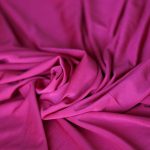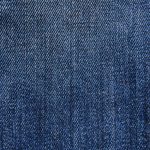When you're choosing between voile and batiste, it's essential to consider their distinctive features. Voile, with its airy, soft texture, lends itself well to flowing summer styles, while batiste offers a slightly crisper feel that's perfect for more structured designs. You might find that the fabric composition and weight significantly impact your project choices. But how do these differences influence your fabric selection for specific applications? Understanding these nuances can help you make informed decisions, so let's explore what sets these two fabrics apart.
Table of Contents
Fabric Composition
When comparing voile and batiste, you'll notice distinct fabric compositions that influence their texture and durability.
Voile is primarily made from 100% cotton, though it can also be blended with polyester or silk. This composition gives voile a crisp, lightweight feel, making it ideal for summer garments and sheer window treatments. The tight weave of the fibers contributes to its slightly stiffer texture, allowing it to hold shapes well.
On the other hand, batiste is typically made from fine cotton or a cotton blend, often with some linen or silk. This results in a soft, smooth fabric that drapes beautifully against the skin.
Batiste's finer fibers create a more delicate texture, making it perfect for lightweight blouses, lingerie, and baby clothes. While both fabrics are breathable, batiste tends to feel softer and more luxurious due to its finer weave.
Weight and Thickness
Understanding the weight and thickness of voile and batiste helps you choose the right fabric for your sewing projects.
Voile typically has a lighter weight, often ranging from 30 to 60 grams per square meter, making it an excellent choice for airy garments like summer dresses or lightweight curtains. Its thinness contributes to a flowy drape, which can create beautiful movement in your designs.
On the other hand, batiste is slightly heavier, usually weighing between 60 to 100 grams per square meter. This added weight gives batiste a bit more structure, making it suitable for garments that require more stability, such as blouses or baby clothes. The thickness of batiste also makes it a popular choice for quilting, as it can provide a sturdier base without being overly bulky.
When selecting between the two, consider the purpose of your project. If you're aiming for something light and breezy, voile's weight will serve you well. However, if you need a fabric that holds its shape while still feeling soft, batiste will be your best bet.
Each fabric offers unique benefits based on its weight and thickness, so choose wisely!
Texture and Feel
Voile has a soft, airy texture that feels lightweight against the skin, making it perfect for summer outfits and delicate blouses.
You'll appreciate how it drapes beautifully, providing a flowy feel that enhances your silhouette. The smooth finish of voile adds a touch of elegance, making it ideal for layering without feeling bulky or heavy.
On the other hand, batiste has a slightly crisper texture. Although it's still lightweight, you'll notice it has a bit more body than voile.
This gives batiste a more structured feel, which can be great for garments that require a little more shape. When you touch batiste, you might feel a subtle softness, but it doesn't have the same airy quality as voile.
Both fabrics are breathable, but you may find that voile feels cooler against your skin on hot days.
If you prefer a fabric that flows and feels almost weightless, voile's your best bet. However, if you lean towards a fabric that offers a bit more definition while still feeling comfortable, batiste will serve you well.
Each fabric provides a distinct tactile experience, catering to different preferences in texture and feel.
Uses and Applications
Both voile and batiste are popular choices for a variety of garments, each lending itself to specific uses based on their unique characteristics.
Voile, with its lightweight and sheer quality, is perfect for summer dresses, blouses, and curtains. You'll appreciate how it creates a delicate, airy feel, making it ideal for layering or for garments that need a touch of elegance. Whether you're sewing a flowy top or decorative window treatments, voile's soft drape enhances your creations.
On the other hand, batiste offers a slightly sturdier feel, making it suitable for more structured garments like shirts, nightgowns, and baby clothes. Its smooth surface is excellent for embroidery and detailed work, giving your projects a polished finish. If you're crafting something that requires a bit more durability, batiste's strong yet lightweight nature makes it a great choice.
Care and Maintenance
When you care for voile and batiste fabrics, it's essential to wash them gently to maintain their delicate qualities and avoid damage. Both fabrics require special handling, but with a few simple steps, you can keep them looking beautiful.
- Wash on a gentle cycle: Use your washing machine's delicate cycle with cold water to prevent wear and tear.
- Use mild detergent: Opt for a gentle, phosphate-free detergent to avoid harsh chemicals that can damage the fibers.
- Avoid bleach: Bleach can weaken the fabric and cause discoloration, so steer clear of it entirely.
- Air dry: Lay your fabrics flat to dry or hang them in a shaded area. Direct sunlight can cause fading and weaken the fibers.
Frequently Asked Questions
Which Fabric Is More Suitable for Sensitive Skin?
When choosing fabric for sensitive skin, you'll want something soft and breathable. Natural fibers like cotton are usually best, as they're less likely to irritate. Always check the weave and choose lightweight options for comfort.
Can Voile and Batiste Be Dyed Easily?
Yes, you can dye both voile and batiste easily. Their lightweight, absorbent nature allows dyes to penetrate well, resulting in vibrant colors. Just follow dyeing instructions for the best results, and you'll enjoy beautiful, customized fabrics.
How Do Both Fabrics Handle Wrinkles?
Both fabrics handle wrinkles differently. You'll find that voile tends to be more prone to wrinkling, while batiste resists creases better. If you want low-maintenance, batiste might be your best choice for smoothness.
Are There Any Eco-Friendly Options Available for These Fabrics?
Yes, you can find eco-friendly options for both fabrics. Many brands now offer sustainable versions made from organic cotton or recycled materials, ensuring you can enjoy softness while being environmentally conscious. It's a great choice!
What Are Common Blends Used in Voile and Batiste?
Common blends you'll find in voile and batiste include cotton, rayon, and linen. These materials enhance softness and breathability, making them ideal for lightweight garments, curtains, and delicate home decor items you might create.
- How Does Ring Spun Cotton Affect Garment Fit and Shape Retention? - August 13, 2024
- What Are the Challenges in Producing Ring Spun Cotton? - August 13, 2024
- Is Ring Spun Cotton Suitable for Plus-Size Clothing? - August 13, 2024







